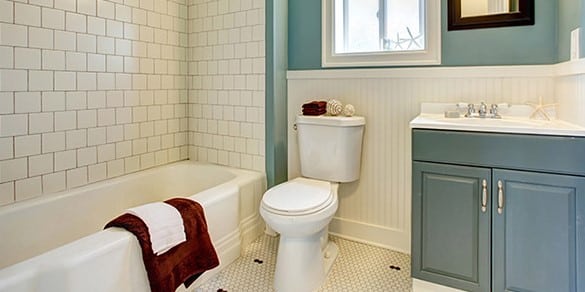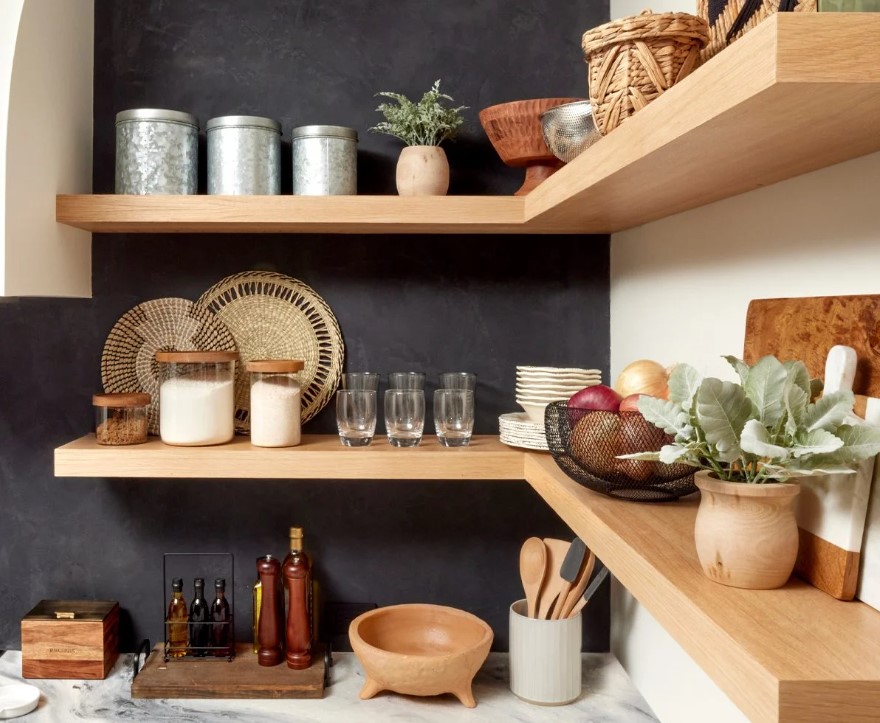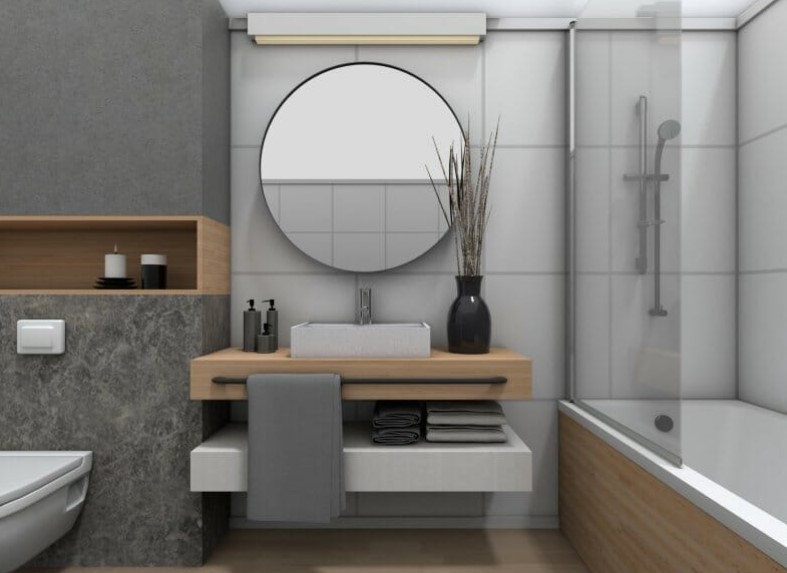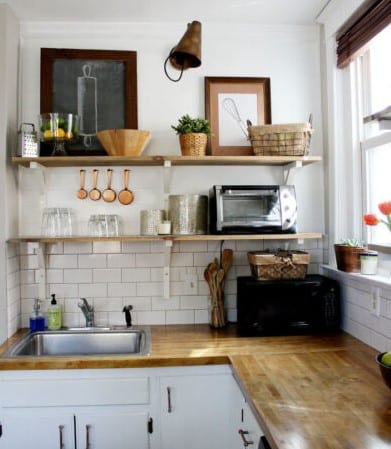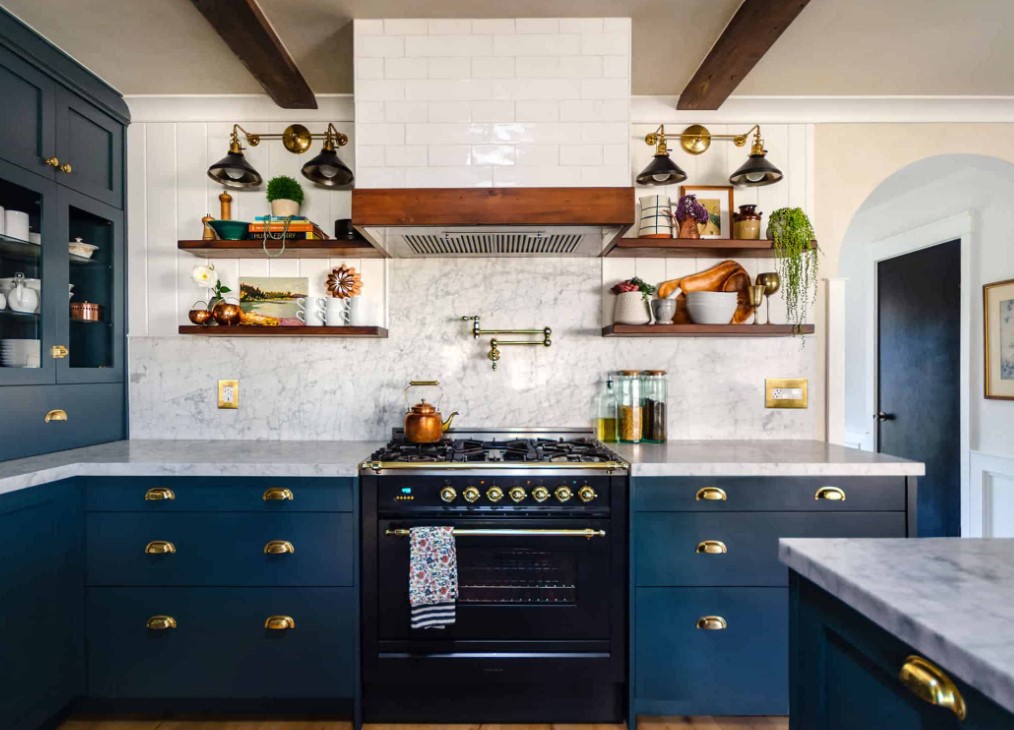Diy kitchen renovation – Renovating your kitchen yourself is an exciting and rewarding project that allows you to breathe new life into one of the most important rooms in your home.
Whether you want to modernize your kitchen, increase your home’s value, or simply enjoy a more functional space, a DIY kitchen renovation offers both financial savings and a deep sense of accomplishment.
This guide will provide you with everything you need to know, from budgeting and planning to selecting the best products and executing the renovation step by step.
We will also explore the benefits of DIY renovation, showcase top product recommendations, and answer common questions to ensure your project is a success.
Understanding the Costs of DIY Kitchen Renovation
Renovate Kitchen Yourself
When you choose to renovate your kitchen yourself, you embark on a journey that combines creativity, effort, and potential cost savings.
The key advantage of a DIY kitchen renovation is the ability to save significantly on labor costs, which can often constitute a large portion of the total renovation budget.
Additionally, renovating your kitchen yourself allows for a high degree of customization.
You have complete control over every aspect of the design, from the layout and color scheme to the choice of materials and fixtures.
This flexibility ensures that the final result reflects your personal style and meets your specific needs.
Taking on a DIY kitchen renovation also offers the satisfaction of accomplishing a major home improvement project with your own hands.
Learning new skills, such as tiling, cabinetry, or installing countertops, can be both challenging and rewarding. This hands-on experience not only enhances your confidence but also adds value to your home.
DIY Kitchen Remodel Cost
The DIY kitchen remodel cost can range widely, depending on various factors such as the size of your kitchen, the scope of the renovation, and the quality of materials used.
On average, a DIY kitchen renovation might cost between $10,000 and $20,000. In comparison, a professionally done kitchen remodel can easily cost between $25,000 and $50,000 or more.
One of the significant advantages of a DIY kitchen remodel is the potential for substantial savings, as you can avoid labor costs associated with hiring professionals.
However, it’s essential to budget for high-quality materials and tools, which can impact the overall cost.
Additionally, unexpected expenses may arise during the renovation process, such as plumbing or electrical issues that need to be addressed.
By carefully planning your project and setting a realistic budget, you can manage costs effectively while still achieving your dream kitchen.
Many DIY enthusiasts also find that investing in their skills through online tutorials or workshops can enhance the quality of their work, ensuring that the finished kitchen not only meets their functional needs but also reflects their personal style.
Factors Influencing DIY Kitchen Renovation Cost
Understanding the factors that influence the cost of a DIY kitchen renovation can help you budget more effectively and make informed decisions throughout the process.
- Kitchen Size: Larger kitchens will require more materials, leading to higher costs.
- Material Quality: The quality of materials chosen, such as countertops, cabinets, and flooring, can significantly impact the overall cost. For example, opting for granite countertops and custom cabinetry will be more expensive than choosing laminate and ready-to-assemble cabinets.
- Extent of Renovation: The scope of your renovation plays a major role in determining costs. A full renovation that includes new plumbing, electrical work, and structural changes will be more expensive than a cosmetic update that focuses on painting, new hardware, and retiling.
- Tools and Equipment: If you do not already own the necessary tools for a kitchen renovation, purchasing or renting them will add to the overall cost.
Kitchen Remodel DIY Cost Breakdown
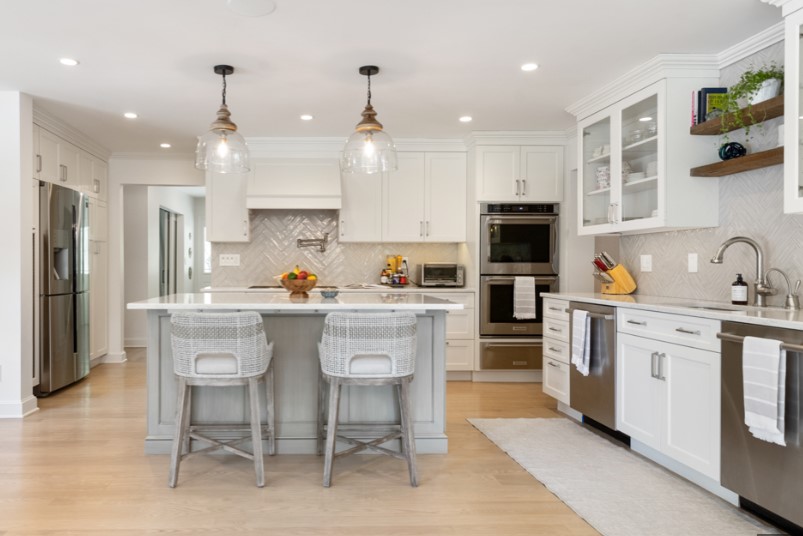
To better understand where your money will be spent, here’s a typical kitchen remodel DIY cost breakdown:
- Cabinets: $3,000 – $8,000 depending on the material, style, and whether they are custom or stock.
- Countertops: $2,000 – $5,000, with the cost varying based on the material, such as laminate, quartz, or granite.
- Appliances: $3,000 – $7,000, depending on the brand, features, and number of appliances being replaced.
- Flooring: $1,500 – $4,000, depending on whether you choose tile, hardwood, or luxury vinyl plank.
- Lighting: $500 – $2,000 for fixtures like pendant lights, under-cabinet lighting, and recessed lighting.
- Plumbing and Electrical: $1,000 – $3,000 if updates or new installations are required.
You can also read : DIY Bathroom Renovation: Upgrade Your Space on a Budget
Essential Tools and Materials for DIY Kitchen Renovation
Basic tools like a hammer, screwdriver set, and tape measure are essential for any DIY kitchen renovation. These tools will assist with everything from cabinet assembly to installing new fixtures with precision.
For larger tasks such as cutting countertops or installing tiles, power tools like a circular saw and a tile cutter are invaluable. These tools save time and ensure clean, accurate cuts, crucial for achieving a polished look.
In addition to tools, materials like screws, adhesive, and caulk are must-haves to secure fixtures and ensure everything stays in place. Choosing high-quality materials will enhance the durability and longevity of your kitchen renovation.
Before starting your kitchen renovation, it’s essential to gather all the necessary tools and materials. The right tools will make the job easier and help you achieve a professional finish, even if you’re not a seasoned DIYer.
Must-Have Tools for DIY Kitchen Renovation
Having the right tools is crucial for a successful kitchen renovation. Here’s a list of essential tools you’ll need:
- Circular Saw: A powerful tool for cutting through various materials like wood, laminate, and even some types of metal.
- Power Drill: Necessary for installing cabinets, drilling holes for hardware, and other fastening tasks.
- Measuring Tape: Accurate measurements are key to ensuring everything fits correctly, from cabinets to countertops.
- Level: Ensures that your cabinets, countertops, and appliances are perfectly straight and aligned.
- Jigsaw: Ideal for making curved cuts and fitting materials around obstacles like outlets and pipes.
- Safety Gear: Includes gloves, safety goggles, and dust masks to protect yourself during demolition and construction.
Materials Needed for DIY Kitchen Renovation
The materials you choose for your DIY kitchen renovation will greatly influence the overall look and functionality of your space. Here’s a list of essential materials:
- Cabinetry: Choose between ready-to-assemble cabinets for a budget-friendly option or custom cabinets for a personalized look.
- Countertops: Options include laminate, granite, quartz, and butcher block, each with its own pros and cons.
- Backsplash: Tiles, glass, or stone backsplashes can add visual interest and protect your walls from splashes and stains.
- Flooring: Durable flooring options like tile, hardwood, or luxury vinyl plank are ideal for kitchens, which are high-traffic areas.
- Lighting: Install a combination of ambient, task, and accent lighting to create a well-lit and functional space.
You can also read : DIY Kitchen Remodel: Transform Your Space on a Budget
Step-by-Step Guide to DIY Kitchen Renovation
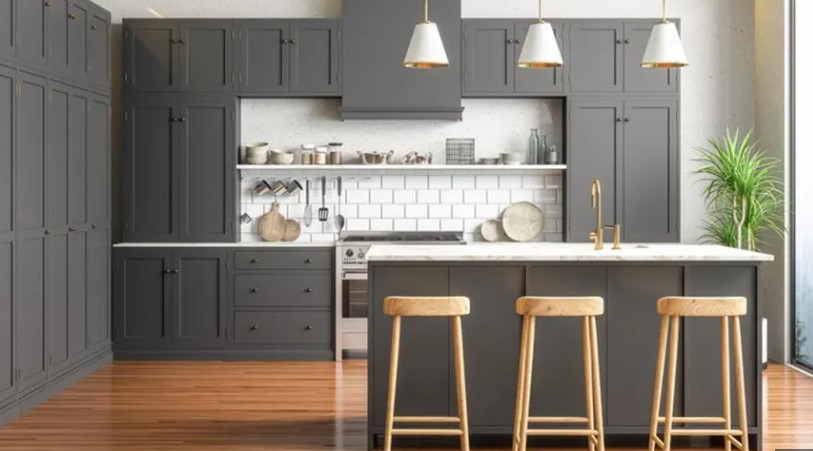
Renovating a kitchen yourself is a major project, but breaking it down into manageable steps can make it more approachable. Here’s a step-by-step guide to help you through the process.
Planning and Design
The first and most crucial step in any renovation project is planning and design. Careful planning ensures that your project stays on track and within budget.
- Layout: Assess your current kitchen layout and decide if you need to make structural changes. Consider the kitchen work triangle (the distance between the sink, stove, and refrigerator) to optimize functionality.
- Style: Choose a design style that reflects your personal taste. Whether you prefer modern, traditional, or rustic, make sure all elements of your design are cohesive.
- Budget: Establish a realistic budget and prioritize where to allocate your funds. Include a contingency for unexpected costs that may arise during the renovation.
Demolition
Once your plan is in place, the next step is to begin demolition. This phase involves removing old cabinets, countertops, flooring, and any other elements you plan to replace.
- Turn Off Utilities: Before starting demolition, turn off the water, gas, and electricity to avoid accidents and ensure safety.
- Protect Surrounding Areas: Use drop cloths and plastic sheeting to protect your floors and nearby rooms from dust and debris.
- Remove Cabinets and Appliances: Carefully remove existing cabinets, countertops, and appliances. If you plan to reuse any elements, remove them carefully to avoid damage.
Plumbing and Electrical Work
With the kitchen stripped down to its bones, it’s time to address any plumbing and electrical work. This stage is critical, especially if you’re moving appliances, sinks, or installing new lighting.
- Plumbing Adjustments: If you’re relocating your sink or adding a dishwasher, you’ll need to reroute the plumbing. Make sure all plumbing work is up to code and properly sealed to prevent leaks.
- Electrical Upgrades: Consider upgrading the electrical system to support modern appliances and add additional outlets or under-cabinet lighting. Ensure all electrical work is done safely and in compliance with local regulations.
For complex plumbing or electrical tasks, it may be wise to hire a licensed professional to ensure the work is done correctly and safely.
Installing Cabinets and Countertops
Once the plumbing and electrical work is complete, you can begin installing your new cabinets and countertops.
- Cabinet Installation: Start with the upper cabinets to avoid damaging lower cabinets during installation. Use a level to ensure the cabinets are perfectly straight, and secure them to the wall studs using screws.
- Countertop Installation: Once the cabinets are securely in place, you can install the countertops. Whether you’re using laminate, quartz, or granite, ensure that the countertops are cut to fit and that the seams are aligned perfectly.
Flooring and Backsplash
After installing the cabinets and countertops, it’s time to focus on the flooring and backsplash, which add both style and functionality to your kitchen.
- Flooring Installation: Depending on the type of flooring you choose, the installation process will vary. For tile or hardwood, start from the farthest corner of the room and work towards the exit. Ensure the floor is level and that tiles or planks are laid evenly.
- Backsplash Installation: Install the backsplash using tile adhesive. Start from the center of the wall and work your way outwards. Use tile spacers to maintain even gaps, and grout the tiles once they are set.
Finishing Touches
The final stage of your DIY kitchen renovation involves adding the finishing touches that will bring the entire space together.
- Appliances: Reinstall your appliances, ensuring that they are correctly connected to the plumbing and electrical systems.
- Lighting: Install new lighting fixtures, including pendant lights over the island, under-cabinet lighting, and recessed lighting in the ceiling to brighten up the space.
- Hardware: Attach new cabinet handles, drawer pulls, and other hardware to complete the look. Choose finishes that complement your overall design style.
You can also read : DIY Floating Shelves: Stylish Storage Solutions for Your Home
Top 5 Products for DIY Kitchen Renovation
Selecting the right products is essential for a successful DIY kitchen renovation. Here are five top-rated products that can enhance your kitchen’s functionality and aesthetics.
1. KraftMaid Cabinetry
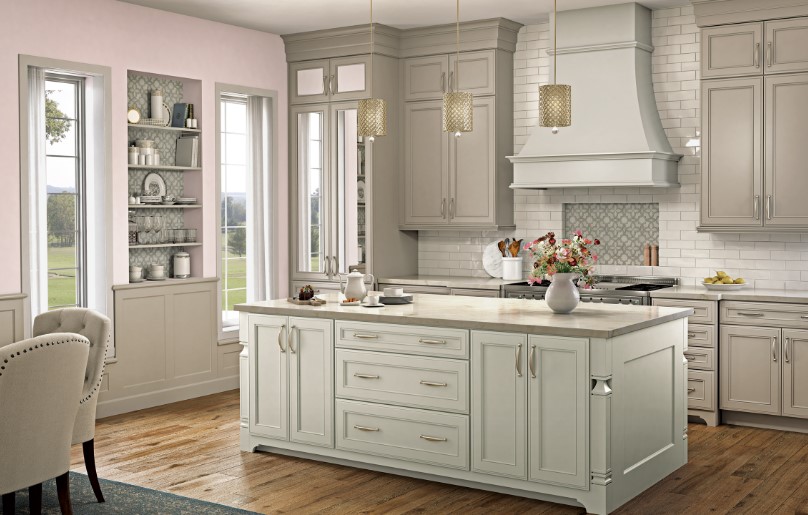
KraftMaid Cabinetry offers a wide range of semi-custom cabinets that allow you to create a personalized kitchen without the custom price tag. Their cabinets are known for their quality construction, including full-extension drawers and soft-close doors.
KraftMaid Cabinetry provides homeowners with versatile design options, offering a wide selection of finishes, wood types, and styles to suit any kitchen aesthetic, from modern to traditional.
With semi-custom options, you can choose specific dimensions, configurations, and features to fit your kitchen’s unique layout, while still benefiting from an affordable price point compared to fully custom cabinetry.
- Use Case: Ideal for homeowners who want a high-quality, semi-custom kitchen without paying for fully custom cabinets.
- Pros: Durable construction, customizable options, wide selection of finishes.
- Cons: Higher price point compared to ready-to-assemble cabinets.
- Price: Starts at $5,000 for a standard kitchen layout.
- Where to Buy: Home Depot
2. LG Quartz Countertops
LG Quartz Countertops are a popular choice for their durability and low maintenance. Quartz is non-porous, making it resistant to stains and bacteria, and it offers a sleek, modern look.
- Use Case: Best suited for kitchens where durability and low maintenance are priorities. Ideal for families who want a sleek, modern look that can withstand daily use.
- Pros: Durable, easy to clean, resistant to stains and scratches.
- Cons: Can be expensive compared to laminate or butcher block.
- Price: Starts at $3,000 for a standard kitchen layout.
- Where to Buy: Lowe’s
3. Samsung Stainless Steel Appliances
Samsung Stainless Steel Appliances are known for their reliability, modern design, and innovative features. From refrigerators with built-in smart screens to ovens with multiple cooking modes, Samsung offers appliances that combine style with functionality.
- Use Case: Ideal for modern kitchens where design and technology are important. Perfect for tech-savvy homeowners who want the latest features in their appliances.
- Pros: Innovative features, energy-efficient, modern design.
- Cons: Higher price point, may require professional installation.
- Price: Refrigerator starts at $1,500, oven at $1,200.
- Where to Buy: Best Buy
4. Armstrong Luxury Vinyl Plank Flooring
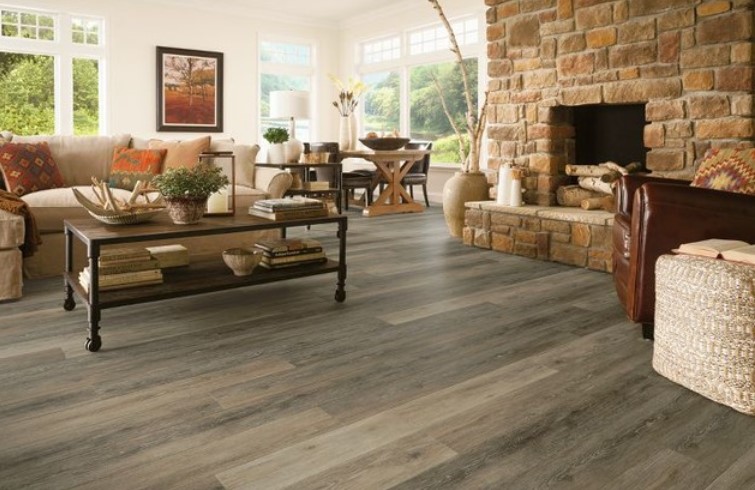
Armstrong Luxury Vinyl Plank Flooring is a cost-effective and durable option for kitchens. It mimics the look of hardwood but is water-resistant and easier to maintain, making it ideal for kitchens.
- Use Case: Suitable for kitchens where durability and water resistance are essential. Ideal for busy households where spills and heavy foot traffic are common.
- Pros: Water-resistant, easy to install, realistic wood appearance.
- Cons: Not as durable as real hardwood, can dent under heavy furniture.
- Price: Starts at $2.50 per square foot.
- Where to Buy: Floor & Decor
5. Delta Touchless Kitchen Faucet
The Delta Touchless Kitchen Faucet combines convenience with modern technology. The touchless feature allows you to turn the water on and off with just a wave of your hand, reducing the spread of germs and keeping your faucet clean.
- Use Case: Perfect for busy kitchens where hands-free operation is a benefit. Ideal for families who want to reduce the spread of germs and maintain a clean faucet.
- Pros: Touchless operation, water-efficient, easy to install.
- Cons: Requires batteries or a power source, higher cost.
- Price: Starts at $300.
- Where to Buy: Amazon
You can also read : DIY Home Improvement Projects: Upgrades for Every Room
Benefits of DIY Kitchen Renovation
A DIY kitchen renovation offers several benefits that go beyond cost savings.
Cost Savings
The most significant benefit of a DIY kitchen renovation is the cost savings. By taking on the labor yourself, you can allocate more of your budget to quality materials and finishes that might otherwise be out of reach.
Customization
When you renovate your kitchen yourself, you have complete control over the design and materials. This allows you to create a kitchen that reflects your personal style and meets your specific needs. From choosing the exact shade of paint to selecting custom cabinet hardware, every detail is in your hands.
Learning and Skill Building
A DIY kitchen renovation is an excellent opportunity to learn new skills and gain confidence in your ability to tackle home improvement projects. Whether it’s installing tile, assembling cabinetry, or wiring new lighting, each step of the renovation process adds to your skillset.
Sense of Accomplishment
There’s a deep sense of satisfaction that comes from completing a major project like a kitchen renovation. Every time you cook a meal, you’ll be reminded of the hard work and creativity that went into transforming your kitchen.
Comparing DIY vs. Professional Kitchen Renovation
When deciding between a DIY kitchen renovation and hiring professionals, it’s essential to weigh the pros and cons of each approach.
- DIY Renovation: The primary advantage of a DIY renovation is the cost savings. You have complete control over the project and can work at your own pace. However, it requires a significant time commitment and the ability to learn and apply new skills. There’s also a risk of mistakes, which could lead to additional costs.
- Professional Renovation: Hiring professionals offers a more streamlined process, with the work often completed faster and with a high level of craftsmanship. Professionals bring expertise and experience, ensuring a polished result. However, this option is significantly more expensive, and your ability to customize may be limited by the contractor’s capabilities or willingness to accommodate your preferences.
How to Buy and Where to Buy Products for DIY Kitchen Renovation
When purchasing products for your kitchen renovation, it’s essential to consider where to buy to ensure you get the best quality and value.
Online Retailers
Online shopping offers convenience and often a broader selection of products. Websites like Amazon, Wayfair, and Build.com provide a wide range of kitchen cabinets, appliances, and fixtures. Be sure to read reviews and check return policies before making a purchase.
- Amazon: Offers a vast selection of kitchen products, often at competitive prices with the convenience of home delivery. Buy Delta Touchless Kitchen Faucet on Amazon
- Wayfair: Specializes in home improvement products and offers a variety of styles and brands. Buy Armstrong Luxury Vinyl Plank Flooring on Wayfair
- Build.com: Known for its extensive selection of home improvement products, including faucets, lighting, and appliances.
Home Improvement Stores
For those who prefer to see and touch products before buying, home improvement stores like Home Depot and Lowe’s are excellent options. These stores often have knowledgeable staff who can provide advice and recommendations.
- Home Depot: Known for its wide selection of products and in-store customer service. Buy KraftMaid Cabinetry at Home Depot
- Lowe’s: Offers similar advantages, with a focus on quality products and DIY-friendly solutions. Buy LG Quartz Countertops at Lowe’s
Detailed Use Cases and Product Comparisons
Choosing the right products for your DIY kitchen renovation is crucial for achieving a professional finish.
Here’s a closer look at the products mentioned earlier, with detailed comparisons based on use case, pros, cons, price, and features.
KraftMaid Cabinetry

- Use Case: Ideal for homeowners who want semi-custom cabinets that offer a personalized look without the custom price tag. Perfect for kitchens of all sizes and styles.
- Pros: Durable construction, customizable options, wide selection of finishes.
- Cons: Higher price point compared to ready-to-assemble cabinets.
- Price: Starts at $5,000 for a standard kitchen layout.
- Features: Full-extension drawers, soft-close doors, wide range of finishes and configurations.
LG Quartz Countertops
- Use Case: Best suited for kitchens where durability and low maintenance are priorities. Ideal for families who want a sleek, modern look that can withstand daily use.
- Pros: Durable, easy to clean, resistant to stains and scratches.
- Cons: Can be expensive compared to laminate or butcher block.
- Price: Starts at $3,000 for a standard kitchen layout.
- Features: Non-porous surface, stain-resistant, available in a variety of colors and patterns.
Samsung Stainless Steel Appliances
- Use Case: Ideal for modern kitchens where design and technology are important. Perfect for tech-savvy homeowners who want the latest features in their appliances.
- Pros: Innovative features, energy-efficient, modern design.
- Cons: Higher price point, may require professional installation.
- Price: Refrigerator starts at $1,500, oven at $1,200.
- Features: Smart technology, energy-efficient, sleek stainless steel finish.
Armstrong Luxury Vinyl Plank Flooring
- Use Case: Suitable for kitchens where durability and water resistance are essential. Ideal for busy households where spills and heavy foot traffic are common.
- Pros: Water-resistant, easy to install, realistic wood appearance.
- Cons: Not as durable as real hardwood, can dent under heavy furniture.
- Price: Starts at $2.50 per square foot.
- Features: Easy click-lock installation, water-resistant, available in various wood-look styles.
Delta Touchless Kitchen Faucet
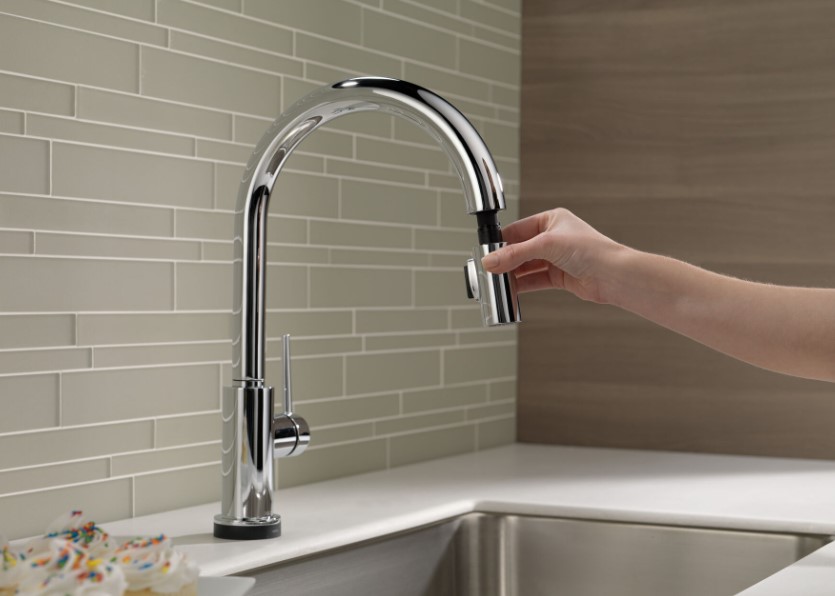
- Use Case: Perfect for busy kitchens where hands-free operation is a benefit. Ideal for families who want to reduce the spread of germs and maintain a clean faucet.
- Pros: Touchless operation, water-efficient, easy to install.
- Cons: Requires batteries or a power source, higher cost.
- Price: Starts at $300.
- Features: Touchless sensor, water-saving aerator, available in various finishes.
Why People Need to Use These Products
Each of the products mentioned offers specific benefits that can solve common kitchen renovation challenges.
For example, the Delta Touchless Kitchen Faucet’s hands-free operation is perfect for busy households where reducing the spread of germs is a priority.
The Armstrong Luxury Vinyl Plank Flooring offers a durable, water-resistant option that can withstand the wear and tear of daily kitchen use.
How to Buy and Where to Buy
When purchasing products for your kitchen renovation, it’s essential to consider the retailer’s reputation, return policies, and customer service. Here’s where to buy the products mentioned:
- Amazon: Offers a wide selection with the convenience of home delivery. Buy Delta Touchless Kitchen Faucet on Amazon
- Home Depot: Ideal for in-person shopping with expert advice available. Buy KraftMaid Cabinetry at Home Depot
- Lowe’s: Another excellent option for in-store shopping with a focus on quality. Buy LG Quartz Countertops at Lowe’s
- Wayfair: Specializes in home improvement products with a range of styles. Buy Armstrong Luxury Vinyl Plank Flooring on Wayfair
FAQ Section
How much does it cost to renovate a kitchen yourself?
The cost to renovate a kitchen yourself can range from $10,000 to $20,000, depending on the size of the kitchen and the materials chosen.
Is it worth doing a DIY kitchen renovation?
Yes, a DIY kitchen renovation can save you a significant amount of money and allows for complete customization. However, it requires time, effort, and a willingness to learn new skills.
Where can I buy materials for a DIY kitchen renovation?
Materials for a DIY kitchen renovation can be purchased from online retailers like Amazon and Wayfair, or in-store at home improvement stores like Home Depot and Lowe’s.
By following this guide, you will be well-equipped to handle your DIY kitchen renovation project with confidence, resulting in a beautifully updated space that reflects your personal style and meets your functional needs.

